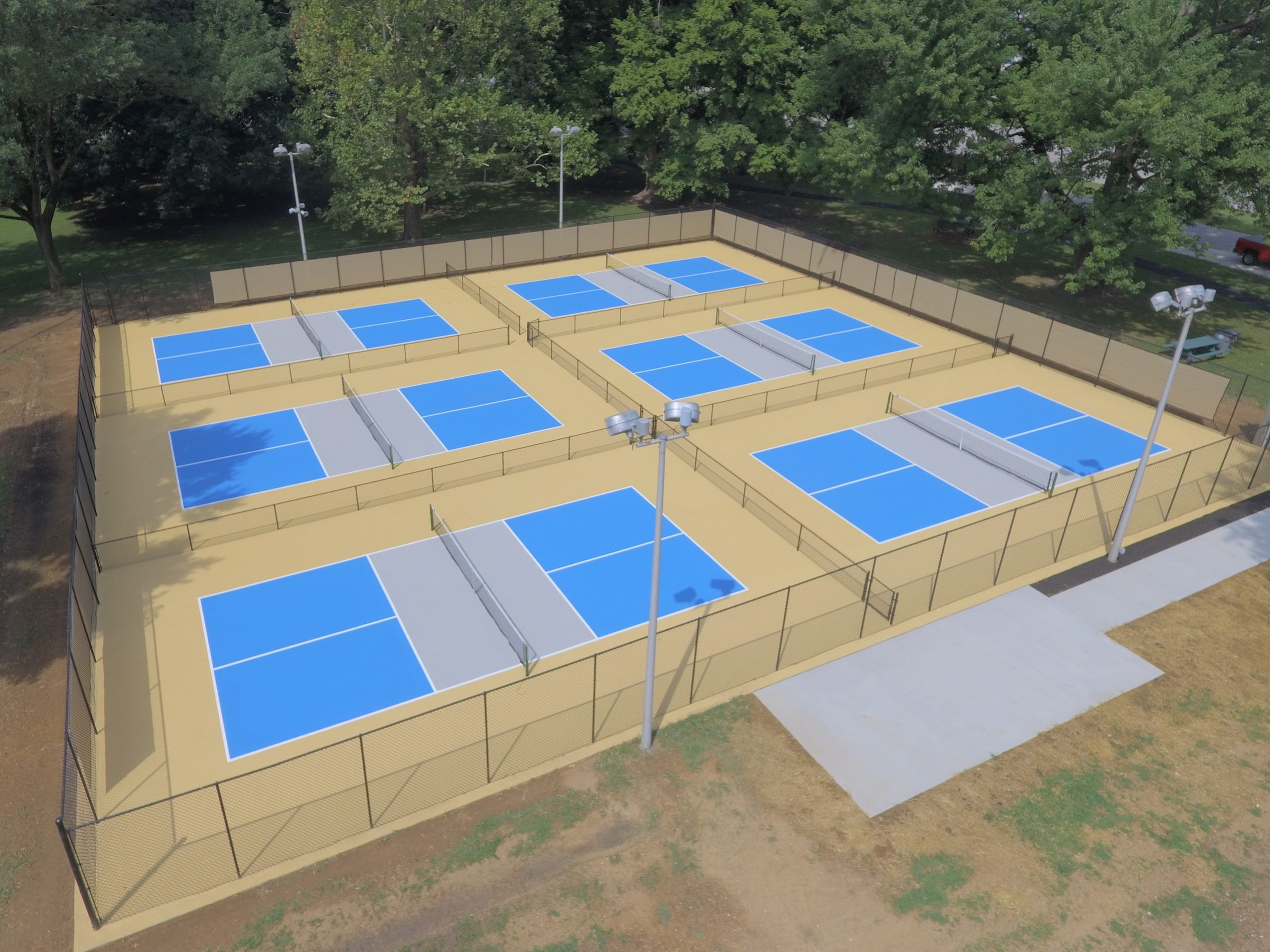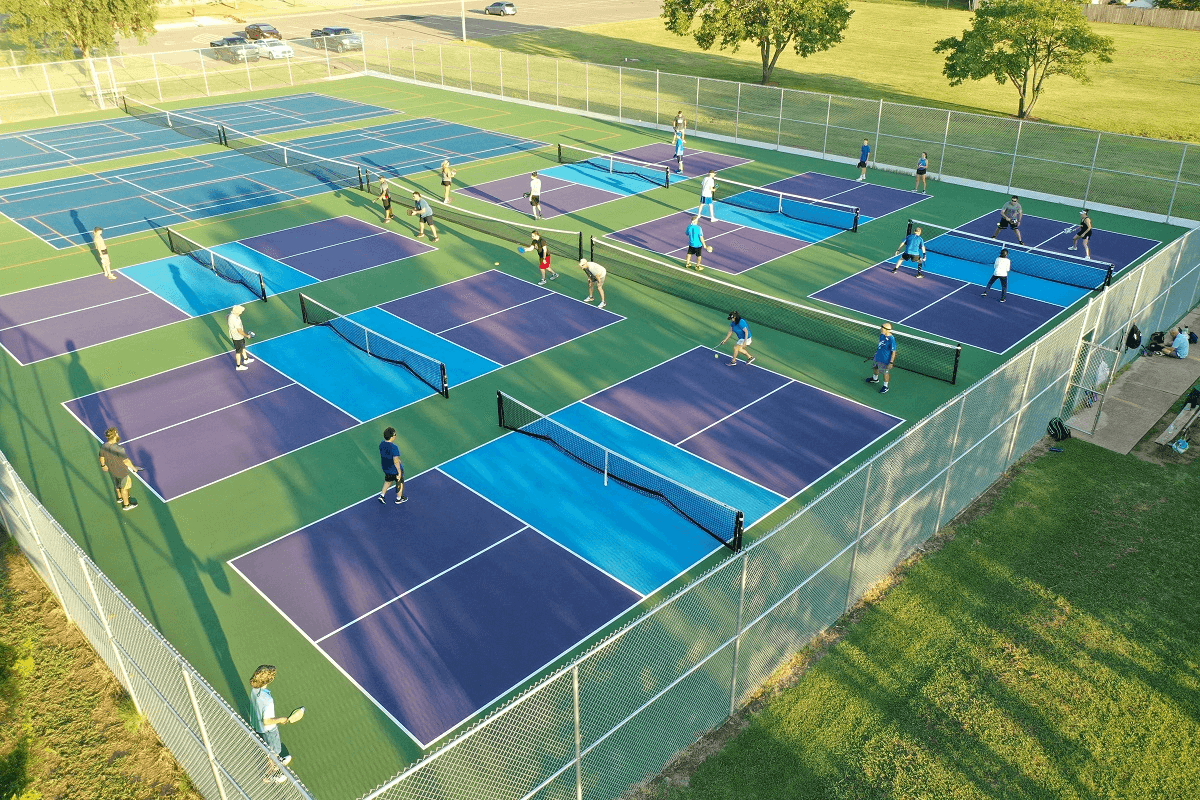Boost Your Video Game with Expert Pickleball Judiciaries Layout & Building in Illinois and Midwest
Key Consider the Building of Pickleball Judiciaries: From Website Choice to Final Finishes
The construction of pickleball courts includes a series of essential variables, beginning with the selection of a suitable site that stabilizes accessibility with ecological factors to consider. Essential aspects such as court dimensions, surface area materials, and drainage systems significantly impact not only the quality of play however likewise the long life of the facility. Furthermore, focus to illumination and ending up touches can boost the overall experience for players and viewers alike. Comprehending just how each of these parts interrelates may reveal understandings that are usually overlooked, motivating a better examination of ideal methods in court construction.
Site Selection Requirements
When starting the construction of pickleball courts, it is vital to nail down the site option standards that will certainly ensure optimum playability and availability. The area has to be easily obtainable for gamers, preferably located near houses or community centers, to encourage involvement.
Moreover, the terrain needs to be level and secure, as unequal ground can lead to safety and security hazards and affect gameplay. Appropriate water drainage is likewise essential; picking a site with good water overflow will aid keep court conditions throughout adverse weather.
One more important consideration is the accessibility of utilities. Accessibility to electricity and water is necessary for lighting and maintenance purposes. In addition, proximity to car parking facilities is crucial, facilitating simple accessibility for gamers and spectators alike.
Environmental factors can not be forgotten; natural shade from trees can boost gamer convenience, while exposure to prevailing winds may interrupt play. Finally, zoning policies and community assistance must be thought about to make sure that the project straightens with regional guidelines and receives the support it requires for effective execution. By carefully assessing these criteria, stakeholders can produce an inviting and functional atmosphere for pickleball lovers.
Court Dimensions and Layout
To ensure ideal gameplay and adherence to regulations, the dimensions and format of pickleball courts should be very carefully defined. A basic pickleball court measures 20 feet in size and 44 feet in length for both singles and doubles play.
The net elevation is set at 36 inches at the sidelines and 34 inches at the facility, creating a small dip that affects ball trajectory. Court markings are equally vital; lines need to be 2 inches broad and distinctive in shade to guarantee presence.
Additionally, a barrier area bordering the court is a good idea, commonly expanding 5 to 10 feet beyond the sidelines and standards to fit gamers' motions and enhance security. Proper design and dimensions not only make sure conformity with official policies yet additionally improve the total playing experience, suiting both leisure and competitive play. Careful planning in these areas is vital to review the successful construction of pickleball courts.
Surface Material Options
Selecting the appropriate surface material for pickleball courts is important for ensuring optimum gamer efficiency and safety. The option of surface can considerably impact gameplay, consisting of round bounce, grip, and player comfort.
There are a number of alternatives readily available, each with its unique attributes. Asphalt is a prominent selection because of its resilience and low upkeep demands. It supplies a strong playing surface that can stand up to various weather however might need periodic resurfacing.
Concrete is another commonly utilized material, using superb longevity and a smooth surface. It permits for consistent round bounce but can be difficult on gamers' joints, making it much less desirable for long-lasting play without correct padding.
For those looking for improved comfort and shock absorption, supported acrylic surface areas present a feasible alternative. These surface areas incorporate a base layer with an acrylic overcoat, offering enhanced traction and a softer feel, which is beneficial for decreasing the risk of injuries.
Last but not least, synthetic lawn is getting traction, particularly for multi-purpose facilities. Its flexibility and lower upkeep needs make it an eye-catching option, though it might not offer the very same ball response as standard tough courts. Cautious consideration of these choices will guarantee an optimal playing environment.
Drainage and Lights Considerations
Appropriate water drainage and effective lights are essential parts in the construction of pickleball courts, significantly affecting both playability and safety. Ample drain systems prevent water buildup, which can lead to slippery surfaces continue reading this and damages to the court framework.
Lighting is equally important, particularly for courts meant for evening usage. Proper illumination enhances exposure, making certain that gamers can see the ball plainly and lowering the risk of mishaps. The positioning of illumination fixtures must be tactically intended to remove shadows and offer even distribution of light across the court. LED lights are advised for their energy performance and durability, offering bright illumination while lowering operational prices.

Last Finishes and Upkeep
After resolving drain and lighting considerations, attention transforms to the final surfaces and continuous upkeep of pickleball courts. Illinois and midwest. The selection of surface area material is essential, as it affects both playability and toughness. Common alternatives consist of acrylic finishes and specialized sports surface areas that give ideal grip and cushioning. These coatings must be used in several layers to ensure resilience against weather aspects and wear.

Seasonal maintenance may consist of resurfacing every couple of years, depending upon usage and environmental variables. Effectively keeping webs, court lines, and surrounding areas is just as vital to give a secure and pleasurable playing experience. By spending in top quality coatings and sticking to an organized upkeep schedule, center owners can guarantee their pickleball courts continue to be in superb problem for many years to find.
Verdict
In conclusion, the effective construction of pickleball courts pivots on precise attention to a number of essential variables. Top quality surfaces and a robust upkeep schedule are crucial for protecting the court's condition, boosting the overall experience for players and spectators alike.